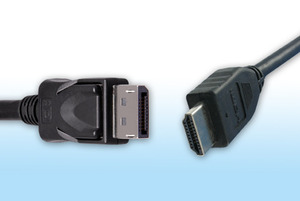Wires, wires!
“Why do we have to have all those wires?” asked a lady recently. “Why can’t they just make one cable to connect everything up rather than having so many?” Anyone who has despaired at the clutter behind their television or hi-fi will agree with that sentiment, and in truth, it is not stupid question. My wife counted up the wires behind our TV and claims it is about 17, though she is the first to admit she may have lost count. Anyone who has a set-top box or two, a separate sound system, a DVD player and maybe an Internet TV box will soon find skeins of wires joining them up, what with mains cables, aerial leads, leads to the television and, often, the Ethernet cables that each of these ‘smart’ devices demands these days.
Can anything be done about it?
The first thing is to check you haven’t actually doubled up some connections. I visited a lady and saw that she had connected both the SCART lead and the HDMI lead between her Sky box and the telly. Fair enough – the cables were in the box and the equipment had the relevant sockets, so why wouldn’t you? But those SCART sockets are only there so you can connect old equipment if you need to. SCART cannot carry high definition pictures, and of course, her telly had defaulted to using that connection rather than the modern high definition HDMI one. I simply removed the SCART lead and she exclaimed at how much clearer her pictures were! The manufacturer may have supplied cables to cater for every eventuality, but that doesn’t mean you should use them all.
 In fact, HDMI is the nearest we have to that universal cable. It carries both video and audio signals, replacing up to four wires if you had previously had component video and audio. In addition, it transmits control signals so you can switch off all your equipment with one press of a remote button, for example, or turn up the volume on your soundbar with the TV remote. It carries a small amount of power, and can even take network signals, replacing an Ethernet cable (though to be fair, I have never seen it used like that). The only downside is that there are now as many as seven standards for HDMI as things have progressed, though fortunately they are all backwards compatible.
In fact, HDMI is the nearest we have to that universal cable. It carries both video and audio signals, replacing up to four wires if you had previously had component video and audio. In addition, it transmits control signals so you can switch off all your equipment with one press of a remote button, for example, or turn up the volume on your soundbar with the TV remote. It carries a small amount of power, and can even take network signals, replacing an Ethernet cable (though to be fair, I have never seen it used like that). The only downside is that there are now as many as seven standards for HDMI as things have progressed, though fortunately they are all backwards compatible.
What wouldn’t be a good idea is putting mains current down the same cable as your video and audio signals, as interference would result. Those cables want to be as far apart as possible.
Some boxes will connect to the Wi-Fi instead of requiring an Ethernet cable, which of course reduces the wire count. But if you have the possibility, i.e. the TV is near the Internet router, you are probably better off keeping video off the Wi-Fi because it soaks up bandwidth, especially if other members of the household are likely to be streaming at the same time. There are wireless HDMI connectors available, but they are very expensive and intended to send video to other rooms, not replace a cable (in fact, they would add another cable and two boxes to the mess, so that doesn’t help!) The cost and the high bandwidth modern HD displays need has prevented this technology being built into equipment as standard.
I admit that it can get pretty complicated telling all the different types of connection apart and deciding which is the best one to use, especially if you have a system with separate sound and set-top boxes, which is where a visit from your friendly expert can help.
|
|
|
|




